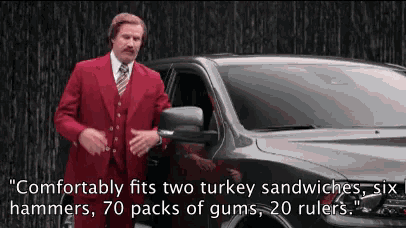Digital Machiavelli #12: Effective Storytelling for Social Ads
How to do paid social well, and how not to.
Welcome back — after a lengthy hiatus — to my ongoing digital content strategy course, delivered straight to your inbox on a relatively regular basis.
What You’ll Learn Today: The fundamentals of paid social content strategy, and how to think like a memelord.
When it comes to growth through paid social media, it’s important to keep in mind the intricacies of what causes a user to hit the Like or Upvote button.
This can often be difficult, especially in a corporate setting, where internal pressures like brand standards and regulatory compliance often cause content creators to get tunnel vision, swearing off creativity and audaciousness entirely.
Unfortunately, that can only lead to ruin and abysmal CTRs, as social media is an arena of unbridled creative energies, one that rewards the bold and punishes the stagnant. My goal today is to help you steer clear of rank mediocrity in paid social.
Paid Social Content Fundamentals
So you’ve decided that organic social engagement just isn’t doing it for you on its own, so you want to throw some money at the social platforms and hope for better results.
But where do you start?
At the first principles level, your goal with content creation for a paid social campaign is to mimic the mechanisms that make social media posts effective.
Here’s a hint: it isn’t any kind of “viral potential” — a concept far too vague to use constructively in the development of content.
Rather, an effective social media post leads the viewer in by presenting a format of information with which they’re already familiar.
Common Social Pitfalls
Avoiding the aforementioned familiar post structure leads to lower engagement across the board, which can manifest in a variety of ways.
The Blatant Ad
The most obviously ineffective approach takes the form of direct advertising, when a post is jam-packed with product images, soulless corporate phrasing, and even price tags — all things a user isn’t expecting to see in their social feed.
This jarring experience leads to strong aversion, which in turn results in low CTRs and even lower engagement.
This isn’t to say these types of paid social posts don’t work at all.
It’s just that they work exactly the same way display ads on websites work: by hoping that the user that sees the ad just happens to already have strong intent to purchase your goods or services, which is a blatant underutilization of what social platforms have to offer.
The Honest Attempt
Those marketing departments with personnel slightly more in-the-know about social media won’t allow the kind of blatant advertising shown above, but they too can fall for the trap of successful ideation being hamstrung by ineffective execution.
If you’re in this situation, you’re likely to produce paid social posts that at least understand the formats that social media users expect, but you may still hold back from embracing them fully, perhaps by avoiding the use of images and screencaps from popular shows out of concerns about copyright infringement or other bureaucratic issues.
This kind of reluctance results in something like this…
While the intention is clearly to tell the user a short story, as many (if not all) successful social posts do, the post lacks the visual storytelling elements needed to do so effectively.
Instead of a series of images arranged in the form of a makeshift comic strip, depicting the scenario envisioned by the creators, the viewer is left to simply read the short story and imagine the events — a clear missed opportunity.
Understanding Visual Storytelling
So how do you build a paid social post that has the potential to perform well, one that will attract attention and retain it long enough to get the message across?
Think about paid social content the same way you would think about organic social content.
You create the paid post much in the same way you would create an organic one: by telling the user a story, and doing so in a concise, stimulating way.
At the end of the day, the most successful posts, whether with 1,000 Likes or 500,000, possess a certain wit specific to online content, where a minimal amount of text, images, and/or audio is used to capture the user’s attention for just a few moments, bringing delight, laughter, contemplation, and more.
Getting into the frame of mind needed to consistently create such posts requires a certain amount of courage to be less direct with the presentation of branding or product.
If you can overcome the desire to push what you’re selling explicitly, you’ll attain the level of strategic thinking and the extended time horizon that allow the most successful online content creators of all stripes to build highly effective conversion funnels that attract users with content that barely resembles a sales pitch.
In other words, relegate conversion to an afterthought.
Why? Because high-yield digital content, especially on social platforms, is value-first.
It speaks to the user in some visceral way, and simply leaves a door cracked open for them in the form of a link. If the content was effective, trust me, the user won’t need any additional convincing to find that door — they’ll find it, and they’ll use it.




